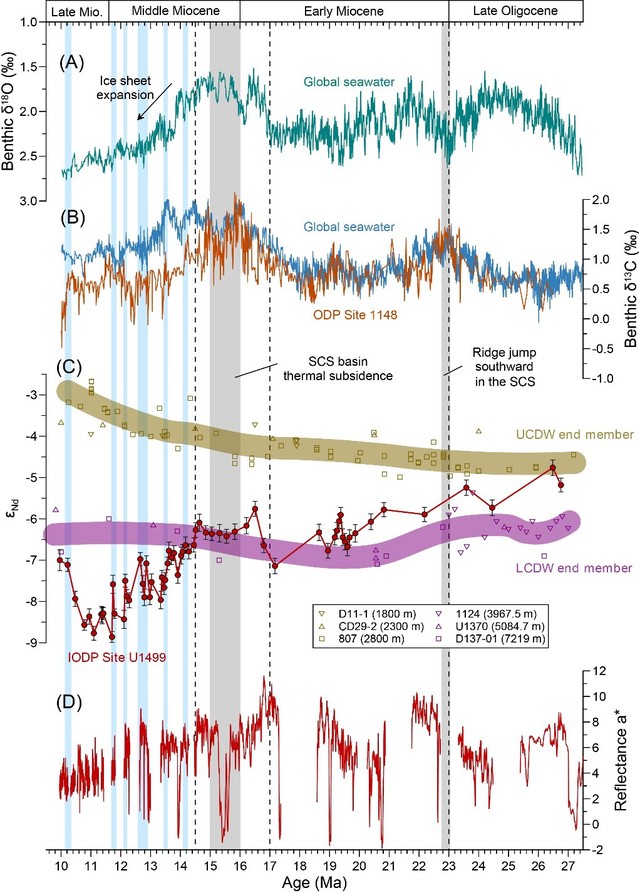Wei Shu1,2, Christophe Colin1,*, Zhifei Liu2,*, and Arnaud Dapoigny3
1Géosciences Paris-Saclay (GEOPS), Université Paris-Saclay, CNRS, Orsay 91405, France
2State Key Laboratory of Marine Geology, Tongji University, Shanghai 200092, China
3Laboratoire des Sciences du Climat et de L’Environnement, LSCE/IPSL, CEA-CNRS-UVSQ, Université Paris-Saclay, Gif-sur-Yvette 91191, France
Abstract: A long-term neodymium isotope (εNd) record of fossil fish teeth was investigated to constrain the evolution of deep-water circulation in the abyssal South China Sea (SCS) during the late Oligocene–Miocene (27–10 Ma). Fish teeth samples were collected from the oceanic red beds at International Ocean Discovery Program Expedition 367 Site U1499 (water depth 3758 m). Seawater εNd values (from –7.1 to –4.8, average –6.1) prior to 15 Ma indicate that water masses in the abyssal SCS resulted from the mixing of more radiogenic Upper Circumpolar Deep Water (UCDW, average –4.5) and less radiogenic Lower Circumpolar Deep Water (LCDW, average –6.4). The general decrease in εNd values was attributed to an increasing influence of the unradiogenic LCDW at the studied site, consistent with the subsidence and the associated deepening of the SCS plain. After 15 Ma, seawater εNd dropped significantly to a range of –8.9 to –6.1 (average –7.5), indicating a slowdown in the hydrological connection between the deep-water masses in the SCS and the western Pacific Ocean. We argue that the formation of the Luzon Strait due to the uplift of the Luzon arc in the late Miocene led to the shallowing and narrowing of the SCS-Pacific channels. Consequently, penetration of LCDW was reduced and water masses in the abyssal SCS would have been less ventilated and strongly influenced by lithogenic input from the unradiogenic sediments of large Asian rivers draining the peri-Himalayan region.
Full Article: https://doi.org/10.1130/g52042.1



